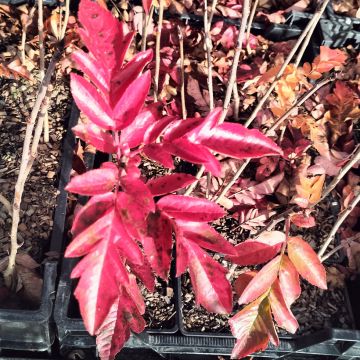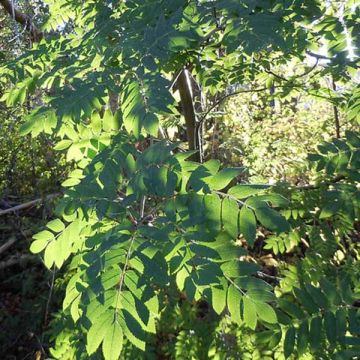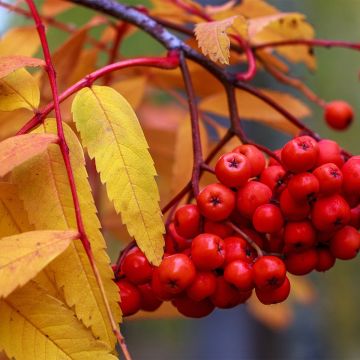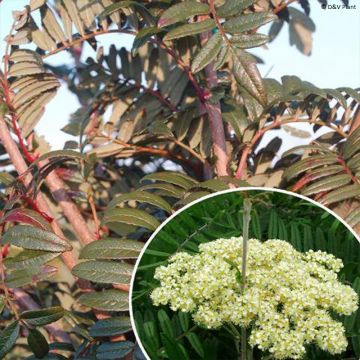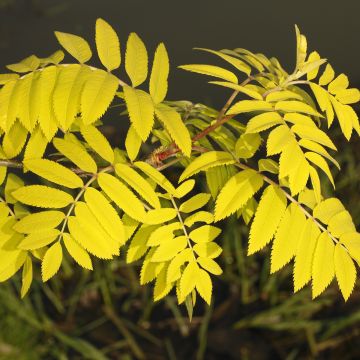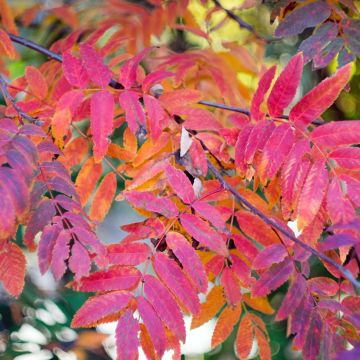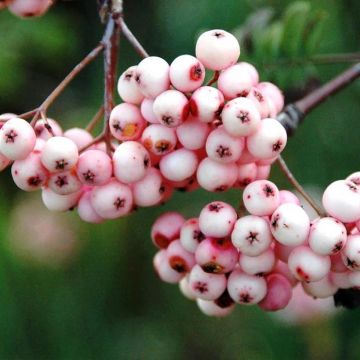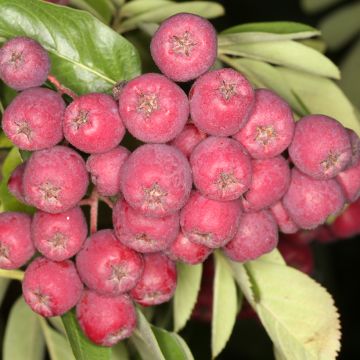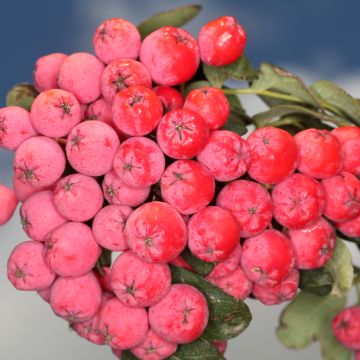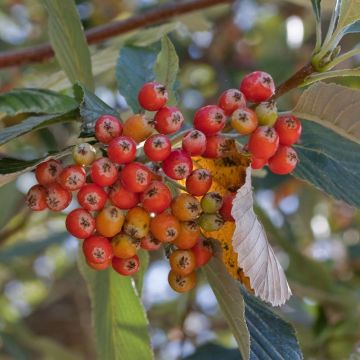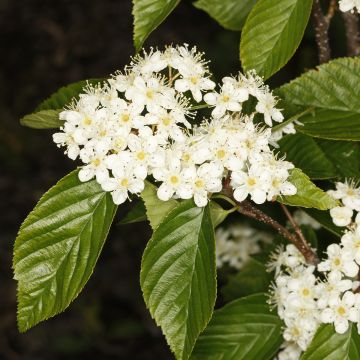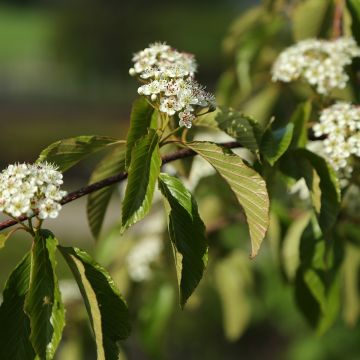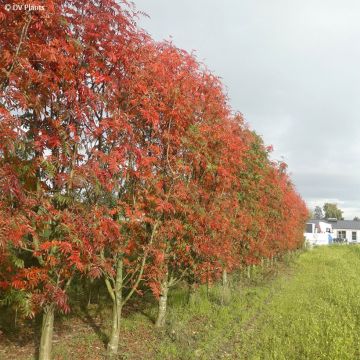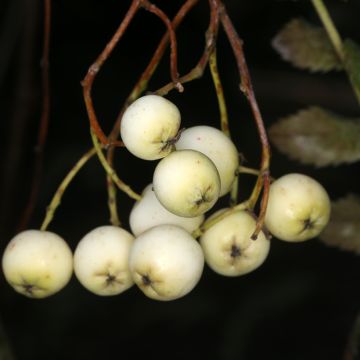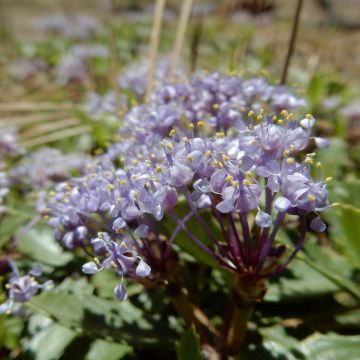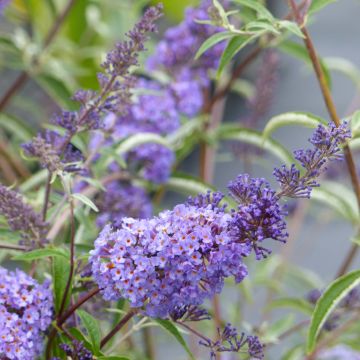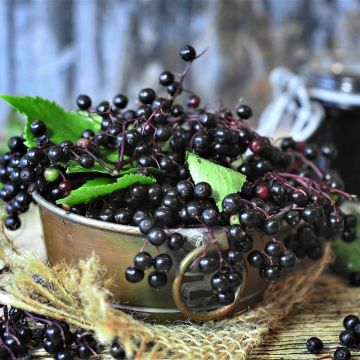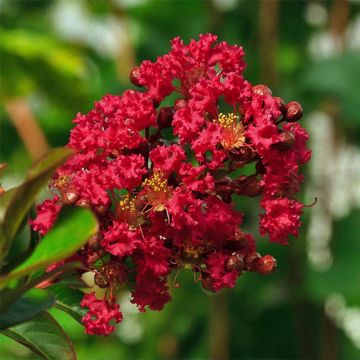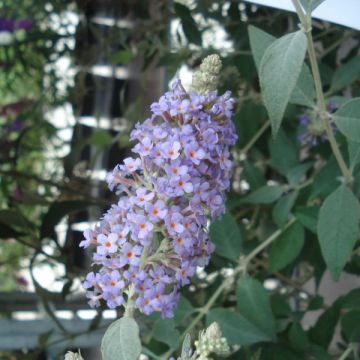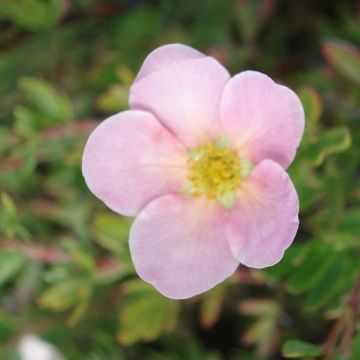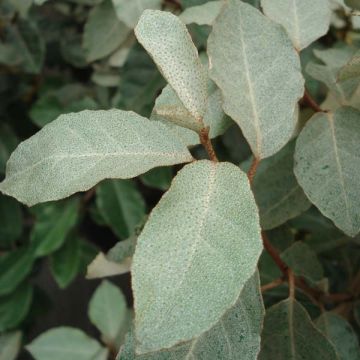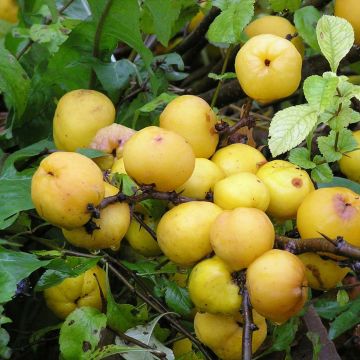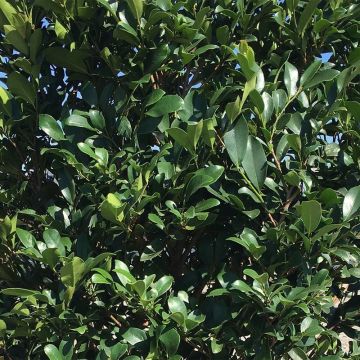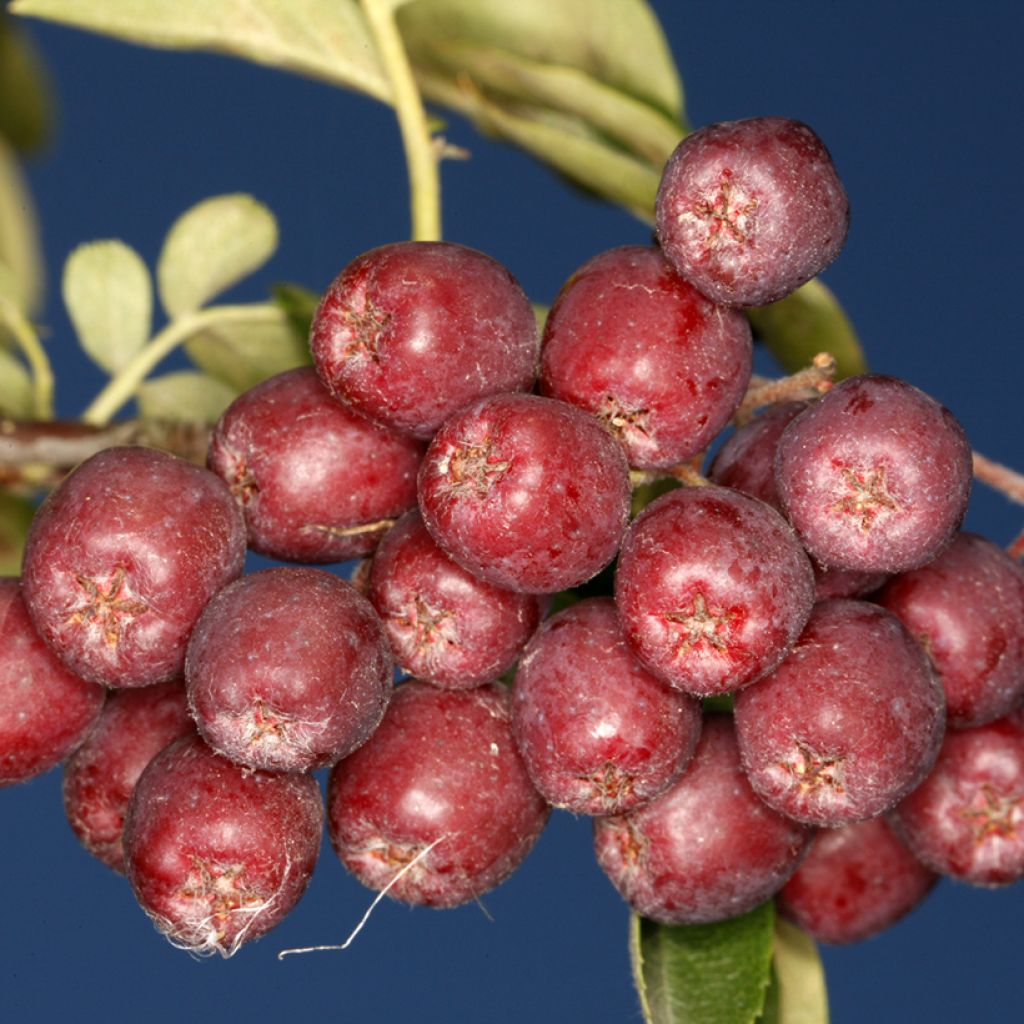

Sorbus aucuparia Krasavica - Rowan
Sorbus aucuparia Krasavica - Rowan
Sorbus aucuparia Krasavica
Rowan, Mountain Ash
Why not try an alternative variety in stock?
View all →This plant carries a 24 months recovery warranty
More information
We guarantee the quality of our plants for a full growing cycle, and will replace at our expense any plant that fails to recover under normal climatic and planting conditions.
Oversize package: home delivery by special carrier from €6.90 per order..
Express home delivery from €8.90.
Does this plant fit my garden?
Set up your Plantfit profile →
Description
Sorbus aucuparia 'Krasavica' is a small variety of Rowan, particularly attractive due to the abundance and size of its orange-red berries. It forms a well-proportioned small tree, with the finely cut leaves that are characteristic of this plant. They are medium green and highlight the flowering in broad white umbels in spring. The flowers develop to produce larger fruits than the typical species by late summer, which, in addition to being very decorative, are edible. In autumn, the foliage takes on stunning shades ranging from red to orange, before the leaves fall. Very hardy and easy to grow in most situations, it is an excellent plant for small gardens.
The Rowan is a representative of the vast family of Rosaceae (approximately 5000 species), which includes wild plants from the countryside (bramble, hawthorn...), ornamental plants (Sorbaria, Chaenomeles, Spiraea...) and numerous fruit trees (Cherry, Peach...). Some of its members can even be classified into all three groups of plants simultaneously, such as Serviceberries, certain Roses, and Rowans. The very rich Sorbus genus comprises over a hundred species, divided into two main types: the Rowans, with compound leaves, and the Alisiers, with simple leaves. There are also intergeneric hybrids resulting from the cross-breeding of a Rowan with a Pear (Sorbopyrus).
'Krasavica' is a Russian cultivar obtained by Ivan Michurin (1855-1935), a revered biologist in his country, specialising in pomology and credited with over 300 new varieties. This Rowan is particularly fruitful, which was a focus of the Russian scientist's work. It forms a small tree only 4 to 6 m tall at maturity, with a spread of 3 to 4 m. Its compact dimensions make it an excellent specimen for small gardens, where it deserves a place, combining attractive flowering, decorative fruits, and stunning autumn colours. It adopts a conical to ovoid habit, supported by a trunk that is most often quite straight, with beautiful bark in grey-brown tones. The branches bear odd-pinnate foliage, which means composed of leaflets arranged oppositely in pairs on either side of the foliar axis, while an odd leaflet extends this at its tip. The number of leaflets frequently varies from 13 to 15, sometimes more, and their colour is a medium green, rather matte. In May, the tree produces 10 to 15 cm diameter umbels, consisting of small, very lightly scented white flowers. They are honey-producing and attract bees that love to forage on them, making it a plant beneficial to wildlife. Once fertilised, the flowers begin to transform into fruits, producing large spherical, 1.2 to 1.5 cm diameter, beautiful orange-red berries. They ripen from August to September and begin to fall from the first frosts, although some will persist on the tree for part of the winter, unless the birds get to them sooner. These fruits are edible, with a sweet and sour refreshing taste and a slight bitterness, and are rich in vitamins. They are suitable for direct consumption (especially after freezing, that is to say, after frosts or after being stored in the freezer for several hours) and are excellent for preserves. Like many other Rowans, this one takes on stunning autumn colours, ranging from red to orange, before the foliage eventually falls to the ground.
Very fruitful and magnificent when adorned with its large clusters of brightly coloured fruits, the 'Krasavica' rowan is an ornamental plant and beneficial to wildlife for most of the year. Its compact dimensions allow it to be planted in a small garden, which it will quickly enhance. Plant it in the countryside, within a wild hedge, or as a specimen on a lawn, or in a city garden, integrating it into a varied flowerbed. You can plant perennials at its feet, such as Hardy Geraniums whose natural appearance will harmonise beautifully with the silhouette of your Rowan. Some naturally shaped shrubs, such as one of the many varieties of Amelanchier alnifolia, which like 'Krasavica' will reward you with a beautiful white spring flowering, decorative edible fruits resembling blueberries, and autumn colours in yellow tones, which will contrast pleasantly with the orange-red. And to perfect your scene, let a Lonicera periclymenum 'Scentsation', a charming Honeysuckle with wonderfully fragrant white and yellow flowers that bloom in successive waves throughout the summer, climb into your small tree.
The Rowan gets its common name from the fact that amateur ornithologists used its fruits to attract birds to their traps in the past. It is also known as the Bird Rowan, as its berries feed wild birds during the lean season. The Slavs regarded the Rowan as a magical tree, endowed with positive and invigorating powers. Planted near the house, it was believed to protect the courtyard from lightning and... demons.
Report an error about the product description
Plant habit
Flowering
Foliage
Botanical data
Sorbus
aucuparia
Krasavica
Rosaceae
Rowan, Mountain Ash
Cultivar or hybrid
Other Sorbus - Mountain Ash
Planting and care
Sorbus aucuparia 'Krasavica' is best planted in autumn in any soil, preferably moist (it tolerates dryness for short periods), slightly acidic to neutral (it also withstands limestone in reasonable amounts). Not demanding, it adapts well to loamy, clayey, or sandy soils. Dig a planting hole 60 to 80 cm wide and add a bit of compost at the bottom if the soil is poor. Soak the container in a bucket to thoroughly moisten the root ball before placing it in the planting hole. Backfill and water generously; monitor watering during the first two years to ensure the tree establishes well.
It will thrive in both sun and partial shade and has no particular requirements. It is a pioneer species capable of establishing itself in poor soils.
Planting period
Intended location
Care
This item has not been reviewed yet - be the first to leave a review about it.
Hedge shrubs
Haven't found what you were looking for?
Hardiness is the lowest winter temperature a plant can endure without suffering serious damage or even dying. However, hardiness is affected by location (a sheltered area, such as a patio), protection (winter cover) and soil type (hardiness is improved by well-drained soil).

Photo Sharing Terms & Conditions
In order to encourage gardeners to interact and share their experiences, Promesse de fleurs offers various media enabling content to be uploaded onto its Site - in particular via the ‘Photo sharing’ module.
The User agrees to refrain from:
- Posting any content that is illegal, prejudicial, insulting, racist, inciteful to hatred, revisionist, contrary to public decency, that infringes on privacy or on the privacy rights of third parties, in particular the publicity rights of persons and goods, intellectual property rights, or the right to privacy.
- Submitting content on behalf of a third party;
- Impersonate the identity of a third party and/or publish any personal information about a third party;
In general, the User undertakes to refrain from any unethical behaviour.
All Content (in particular text, comments, files, images, photos, videos, creative works, etc.), which may be subject to property or intellectual property rights, image or other private rights, shall remain the property of the User, subject to the limited rights granted by the terms of the licence granted by Promesse de fleurs as stated below. Users are at liberty to publish or not to publish such Content on the Site, notably via the ‘Photo Sharing’ facility, and accept that this Content shall be made public and freely accessible, notably on the Internet.
Users further acknowledge, undertake to have ,and guarantee that they hold all necessary rights and permissions to publish such material on the Site, in particular with regard to the legislation in force pertaining to any privacy, property, intellectual property, image, or contractual rights, or rights of any other nature. By publishing such Content on the Site, Users acknowledge accepting full liability as publishers of the Content within the meaning of the law, and grant Promesse de fleurs, free of charge, an inclusive, worldwide licence for the said Content for the entire duration of its publication, including all reproduction, representation, up/downloading, displaying, performing, transmission, and storage rights.
Users also grant permission for their name to be linked to the Content and accept that this link may not always be made available.
By engaging in posting material, Users consent to their Content becoming automatically accessible on the Internet, in particular on other sites and/or blogs and/or web pages of the Promesse de fleurs site, including in particular social pages and the Promesse de fleurs catalogue.
Users may secure the removal of entrusted content free of charge by issuing a simple request via our contact form.
The flowering period indicated on our website applies to countries and regions located in USDA zone 8 (France, the United Kingdom, Ireland, the Netherlands, etc.)
It will vary according to where you live:
- In zones 9 to 10 (Italy, Spain, Greece, etc.), flowering will occur about 2 to 4 weeks earlier.
- In zones 6 to 7 (Germany, Poland, Slovenia, and lower mountainous regions), flowering will be delayed by 2 to 3 weeks.
- In zone 5 (Central Europe, Scandinavia), blooming will be delayed by 3 to 5 weeks.
In temperate climates, pruning of spring-flowering shrubs (forsythia, spireas, etc.) should be done just after flowering.
Pruning of summer-flowering shrubs (Indian Lilac, Perovskia, etc.) can be done in winter or spring.
In cold regions as well as with frost-sensitive plants, avoid pruning too early when severe frosts may still occur.
The planting period indicated on our website applies to countries and regions located in USDA zone 8 (France, United Kingdom, Ireland, Netherlands).
It will vary according to where you live:
- In Mediterranean zones (Marseille, Madrid, Milan, etc.), autumn and winter are the best planting periods.
- In continental zones (Strasbourg, Munich, Vienna, etc.), delay planting by 2 to 3 weeks in spring and bring it forward by 2 to 4 weeks in autumn.
- In mountainous regions (the Alps, Pyrenees, Carpathians, etc.), it is best to plant in late spring (May-June) or late summer (August-September).
The harvesting period indicated on our website applies to countries and regions in USDA zone 8 (France, England, Ireland, the Netherlands).
In colder areas (Scandinavia, Poland, Austria...) fruit and vegetable harvests are likely to be delayed by 3-4 weeks.
In warmer areas (Italy, Spain, Greece, etc.), harvesting will probably take place earlier, depending on weather conditions.
The sowing periods indicated on our website apply to countries and regions within USDA Zone 8 (France, UK, Ireland, Netherlands).
In colder areas (Scandinavia, Poland, Austria...), delay any outdoor sowing by 3-4 weeks, or sow under glass.
In warmer climes (Italy, Spain, Greece, etc.), bring outdoor sowing forward by a few weeks.

































